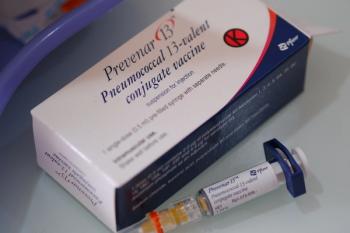
Side Effects of the Shingles Vaccines
What patients can expect after Shingrix or Zostavax injections.
Any medicine, including vaccines, carries a risk of adverse events or side effects. The
The two available vaccines for shingles-Shingrix and Zostavax-each has its own associated side effects. Patients should be informed about what to expect prior to vaccination to help them manage their expectations.
Shingrix (recombinant zoster vaccine, or RZV)
GSK, the manufacturer of
In Shingrix clinical trials, the majority of people complained of mild to moderate pain in their arm, as well as redness and swelling at the injection site. About one in six people experienced side effects that prevented them from doing regular activities for two to three days. These side effects were reportedly more common in younger people.
“It causes more reactions than a lot of other vaccines, certainly the adult vaccines that people are familiar with getting,” CDC medical officer Kathleen Dooling, MD, MPH says of Shingrix. “Not only do we expect more people to have reactions from the vaccine, but we expect those reactions to be more intense than things they’ve previously encountered.”
Shingrix is administered in two doses. Even if a patient experiences one or more of the associated reactions with the first dose, they should still get the second dose as scheduled within 2 to 6 months. Dooling advises that the single contraindication to receiving the second dose is a severe allergic reaction, such as anaphylaxis, to the vaccine or any component of the vaccine.
Zostavax (live zoster vaccine, or ZVL)
The most common side effects of Zostavax occur at the injection site, which include redness, pain, itching, swelling, a hard lump, warmth, or bruising, as well as headache. Additional reported side effects are a potentially serious allergic reaction that may involve difficulty in breathing or swallowing, hives at the injection site, chickenpox, fever, joint or muscle pain, nausea, and rash. Swollen glands near the injection site that last a few days to a few weeks may also occur.
Both Merck, which manufacturers
The CDC recommends Shingrix for healthy adults 50 years and older to prevent shingles and
“In the recommendations, there’s a lot of latitude for clinicians to do risk assessment for their patients and decide what the optimal interval should be,” notes Dooling. “They can take into consideration things such as age, the state of the immune function of their patient, and the patient’s desire to get vaccinated.”
The CDC recommends that Zostavax be used in healthy adults 60 years and older under certain circumstances. These include if a person is allergic to Shingrix, prefers Zostavax, or asks for immediate vaccination and Shingrix is unavailable.
Newsletter
Pharmacy practice is always changing. Stay ahead of the curve with the Drug Topics newsletter and get the latest drug information, industry trends, and patient care tips.





























































































































